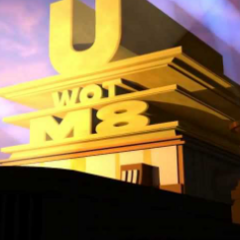
ssm14293
Member-
Posts
82 -
Joined
-
Last visited
Awards
This user doesn't have any awards
About ssm14293
- Birthday Feb 14, 1993
Contact Methods
-
Steam
http://steamcommunity.com/id/ssm14293
-
Twitter
echo_salik
Profile Information
-
Gender
Male
-
Location
Pakistan
-
Occupation
Student
System
-
CPU
Intel G3260
-
Motherboard
GA H81M SP2V
-
RAM
8GB DDR3 Corsair Vengence
-
GPU
GT710 1GB
-
Case
Thermaltake N25
-
Storage
250GB Kingston SSDNOW
-
PSU
Corsair VS350
-
Display(s)
Samsum LED
-
Cooling
Stock Intel
-
Operating System
Windows 10 Pro
Recent Profile Visitors
ssm14293's Achievements
-
troubleshooting FOXCONN LGA775 Motherboard will not POST
ssm14293 replied to ssm14293's topic in Troubleshooting
Its not thermal paste. Its yellow and dry... like eye crust... i know worst example, but the only one that came to my mind now. How can I clean it? -
troubleshooting FOXCONN LGA775 Motherboard will not POST
ssm14293 replied to ssm14293's topic in Troubleshooting
Pins are not bent, but there is some kind of residue on it. Could it be the reason? -
troubleshooting FOXCONN LGA775 Motherboard will not POST
ssm14293 replied to ssm14293's topic in Troubleshooting
Sorry. I thought troubleshooting a Mobo would fall under this. Yes it has the most recent and It supports the processor that was inside it. As I said it worked before. As for bent Pins, I did not see that. But the CPU was not removed from socket until I swapped it out to check the CPU. Though I will check it out. Yeah Power Supply is fine (Same result on different PSU). Forgot to mention that. -
So I have this motherboard a Foxconn P45A-S motherboard with a Core2Quad ( Q6600 i believe). Now the problem is there is no post, No video output, no beeps, nothing. What I have tested: If I remove the RAM (no RAM Sticks installed) it gives its beeps. The RAM I am testing in it is a good piece as another PC is running off of it. It needs a GPU for display, it has a GT220. This works too as I tried it out in another motherboard and it worked. The CPU is fine too, I swapped it in an old Dell GX330 and it booted up fine. I swapped in an Core2Duo E2600 or something I don't remember the code. Still same no boot and no beeps. Cleared CMOS. No Effect. The System was working fine when after a reset, the system didn't boot/post. The processor was overheating before as the cooler was not sitting correctly. That was taken care off and it was stable before this happened. Now the main problem is there is no post. Keyboard lights up, I can even change Numlock state for like 10 or 5 seconds then it freezes too. Now what can be the problem. I am out of ideas. If I have missed something out, tell me I'll add that detail.
-
My Graphics card won't support two monitors, but why?
ssm14293 replied to UltiTyler's topic in Graphics Cards
May be i misread your post. My bad. Sorry- 17 replies
-
My Graphics card won't support two monitors, but why?
ssm14293 replied to UltiTyler's topic in Graphics Cards
By 6 display port he means daisy chaining. You also need an LCD that supports that. (Linus said it in a video idr which one, its quiet old though)- 17 replies
-
My Graphics card won't support two monitors, but why?
ssm14293 replied to UltiTyler's topic in Graphics Cards
There are number of stuff available that doesnt work. So do you research first I recently had a same problem. Hence I know.- 17 replies
-
My Graphics card won't support two monitors, but why?
ssm14293 replied to UltiTyler's topic in Graphics Cards
The DVI port you are using. Is it DVI D? Then no way you can get analog signal from it. DVI D does not have pins around the flat pin.- 17 replies
-
DIY Case Fan Controller w/ RGB LED Controller
ssm14293 replied to ssm14293's topic in Cases and Mods
@W-L and Mods I think i made a boo boo. Would you be kind enough to move this thread to Modding? Thanks Mod! -
DIY Case Fan Controller w/ RGB LED Controller
ssm14293 replied to ssm14293's topic in Cases and Mods
GITHUB Link in the First Post PC Software Requirements .NET Framework 4.5.2 OpenHardwareMonitor for PC Temps and Load data Arduino Requirements: Any arduino with at least 16K program storage memory and 2K RAM Any Arduino with at least 5 PWM pins (2 for FANS and 3 FOR RGB LED) or 3 PWM pins (2 FANS and 1 LED) Current Limitations Updates of the Software/Firmware: >> 26-01-17 (commit: d9692dfa705d0b53d5a06803d6557792c1a5d5ed ) For Arduino: Added Tasked feature via Task Macro Library, related discussion on Arduino Forum (External Link to Forum) Now changes will be applied at the time of submission. Still no settings are saved in Arduino. For PC: No changes in this build. >> 21-01-17 For Arduino Due to non-RTOS nature of the Arduino Software, your settings and LCD data updates may be applied late as roll color feature in RGB lights takes up a lot of Cycles. To remove this, I have two options, create the RTOS version of the Arduino Firmware (in progress) or use 3 (LCD and Fans, Main, RGB LED Controller) individual micro-controllers and let them talk to each other. The latter one will increase the cost by around 6 to 7 USD and there will be major changes in the Firmware. Even though RTOS is a good option, this seems better to me as I have not worked with RTOS before and this will be my first time. It may take me time to make the RTOS Version of this so I'll make the distributed version first. Currently no settings are saved in Arduino. For PC: It needs OpenHardwareMonitor to work. It provides data via WMI so that the software can work. (Will add more) -
DIY Case Fan Controller w/ RGB LED Controller
ssm14293 replied to ssm14293's topic in Cases and Mods
Tools Required: Soldering Iron Solder Tweezers (optional) Cost (Up-till Now): Following Schematic V3 Prices are in Pakistani Rupees and US prices are calculated wrt exchange rate (1 USD = 100PKR [rounded to nearest 10]) LCD: 700 PKR (7.0 USD) Transistors: 35 PKR per transistor x 5 transistors = 175 PKR (1.75 USD) Arduino Nano: 475 PKR (4.75 USD) Resistors : 0 PKR (0 USD) [already have a stockpile of resistors] Diodes: 0 PKR (0 USD) [same as above] Male Header: 0 PKR (0 USD) [same as above] Total: 1350 PKR (13.50 USD) Circuit Testing Updates: I would not suggest using ULN2003 IC as it was getting hot in my testing. There were two Low Load Fans and it was not able to sufficiently sink all current as the ICs current limit is 650mA. If someone knows any such IC with a Higher Power Limit. I would love to know. I am using Pro Micro in this image, i would not recommend to use this in any high voltage project, this board is really sensitive. Prefer using it in low voltage apps. I have fried 2 pins of this board with 5.5V, Uno is better wrt sensitivity - more like Nokia 3310. Attached are the Images. (Yes I know my work area is not clean - I clean up after completion of projects) 29-12-16 05-01-17 - LCD with Live Updates -
Hi all I am planning to make a DIY Case fan controller w/ RGB LED Control that can be controlled by a software from the PC. I know there are a lot of these out there but either they are to expensive for me or they don't give the satisfaction you get when you make something yourself. So these are the features I am planning: PWM Fan Controller via Arduino RGB Led Controller via Arduino CPU/GPU temp and usage on LCD (monochrome to keep it under budget) RAM usage on LCD Powered by PC PSU (duh) Bare-bone Arduino (Atmega328p) w/ USB to TTL All systems Inside PC Case (Mine is Thermaltake n25 windowed) Setting to be saved in Arduino so that it is recalled on restart PC Software is being designed in Visual C#, initially I thought of python but its GUI making process is confusing AF. If someone wants a Python version, guide me to a Python GUI tutorial (or an alternative way CLI maybe?) and I'll make it in python making the software work in any OS environment. Well, come to think of it CLI is better, with a config file. I'll look into that. I will be uploading the Schematic of the Prototype Circuit in few hours. Schematic V1: (24-12-2016) Schematic V2: (27-12-2016) Schematic V3: (27-12-2016) Schematic V4 (30-01-2017) PC Software Images (PC Load/Temp Values are read by OpenHardwreMonitor via WMI) Main Settings Fan Curve Now It can talk to Arduino (Update: 02-01-17) LCD Layout (made it in Excel): This project will be open-source and I will make all codes and stuff available on GitHub once its complete. If you have any suggestions/criticism, feel free to post a comment. I would appreciate it. Reason For delay of completion (16-01-2017): Sorry for the delay,I have gotten down with flu and I have not received most of my parts yet. Further more, the shift-out library of arduino fails to work on my Uno and Pro Micro. I have tested it out with my oscilloscope, not signal (perma low or high signal) on either data or signal pin. I guess something broke the Arduino software (IDE) as both the arduino work with other sketches. Project Link on GitHub: GitHub DISCLAIMER: Try out the circuit on a breadboard before making it final and test for all shorts. Even though the schematic (to my knowledge) is complete there is always room for error. This is a DIY that you would be putting in your PC. Do it at your own risk, neither me nor anyone who makes changes to the Schematic would be the one to blame. Try it out on a bread board first. EDIT LOG: EDIT 1 (24-12-2016): Added Schematic EDIT 2 (24-12-2016): Made a stupid mistake in schematic. Correcting it. EDIT 3 (24-12-2016): Corrected the stupid mistake in schematic. EDIT 4 (27-12-2016): Added V2 of schematic with easy to solder/available components (LCD), Arduino Nano EDIT 5 (27-12-2016): Added V3 of schematic. Removed I2C port expander. Lesser components to deal with. EDIT 6 (27-12-2016): Corrected Diode placement. Always used the old method. never new it didn't work. Well I never had a fried transistor. But searched it and got to know its wrong to use it the way it was. Well you get to learn something new everyday! EDIT 7 (28-12-2016): I have added the images of the PC software. It is in works. Doesn't look good I know. But I am aiming toward functionality first. EDIT 8 (02-01-2017): Now the software can talk to the Arduino (serial Port functionality now working and sending data) EDIT 9 (16-01-2017): Added reason for delays. EDIT 10 (30-01-2017): Added the final schematic. This is the one I'll be using. I'll update this schematic to include an EEPROM to save and load data. Also included a power selector for LED. PS: Next Two Posts will be reserved
-
470 is like 2000 less then 480 so that also way out of the budget. BTW what should i update first? cpu or gpu?
-
1080 is good enough for me even 720. BTW my monitor is 16:10 (1440x900)
-
Xeon E3 1220 v3 (cheaper then most i7s)















